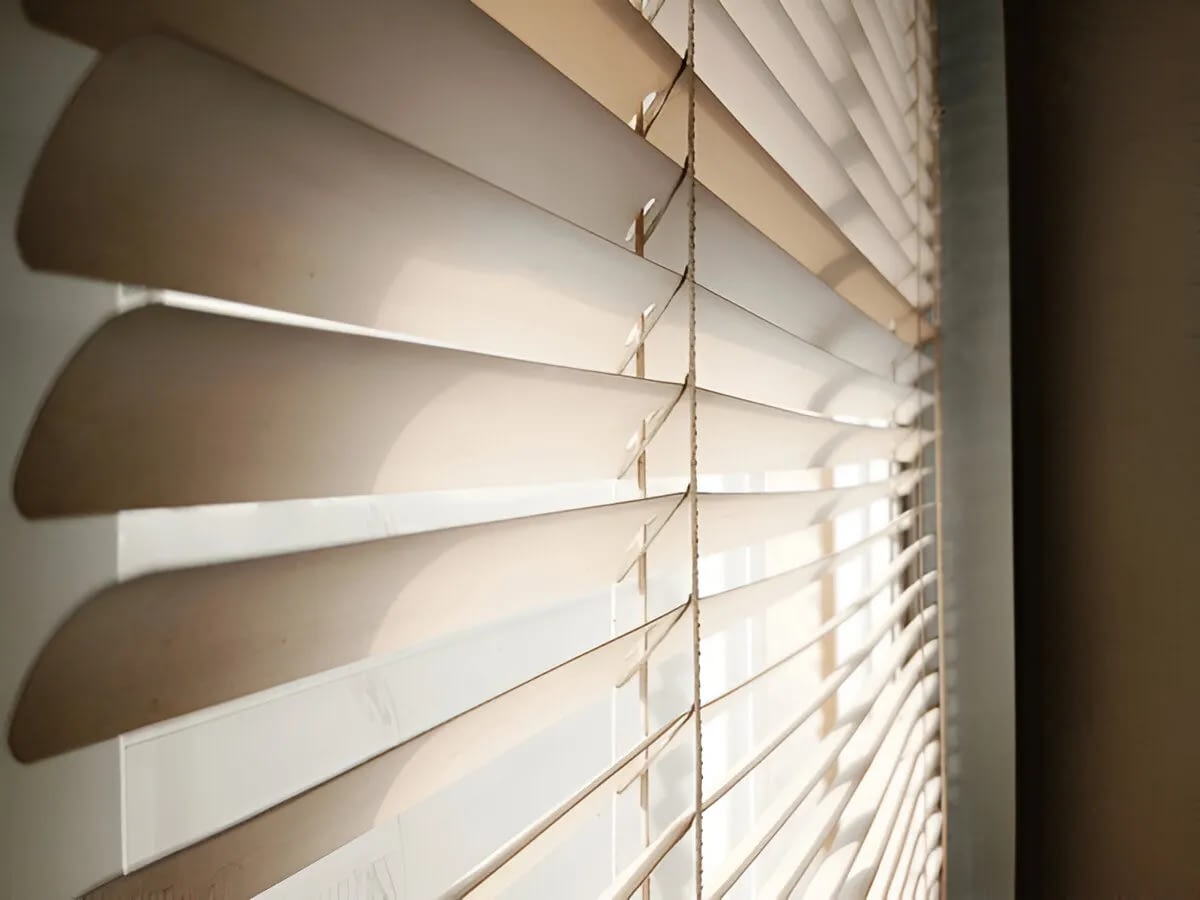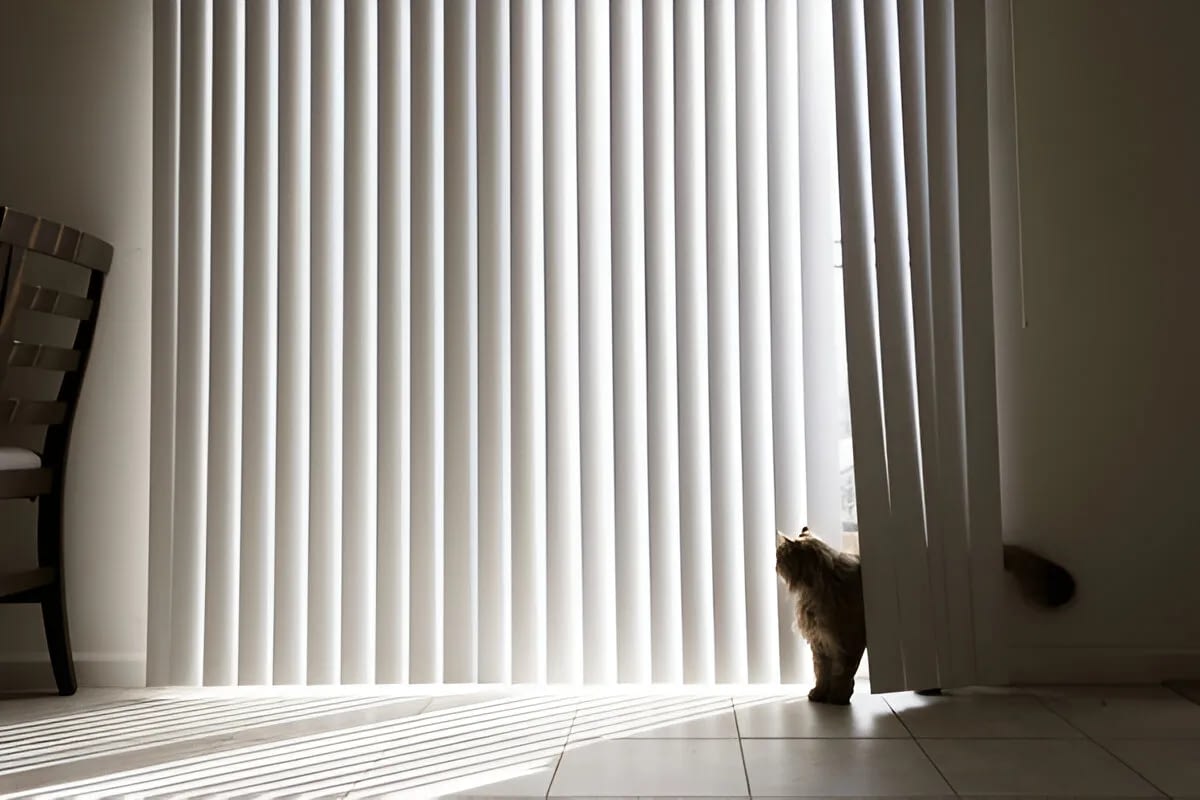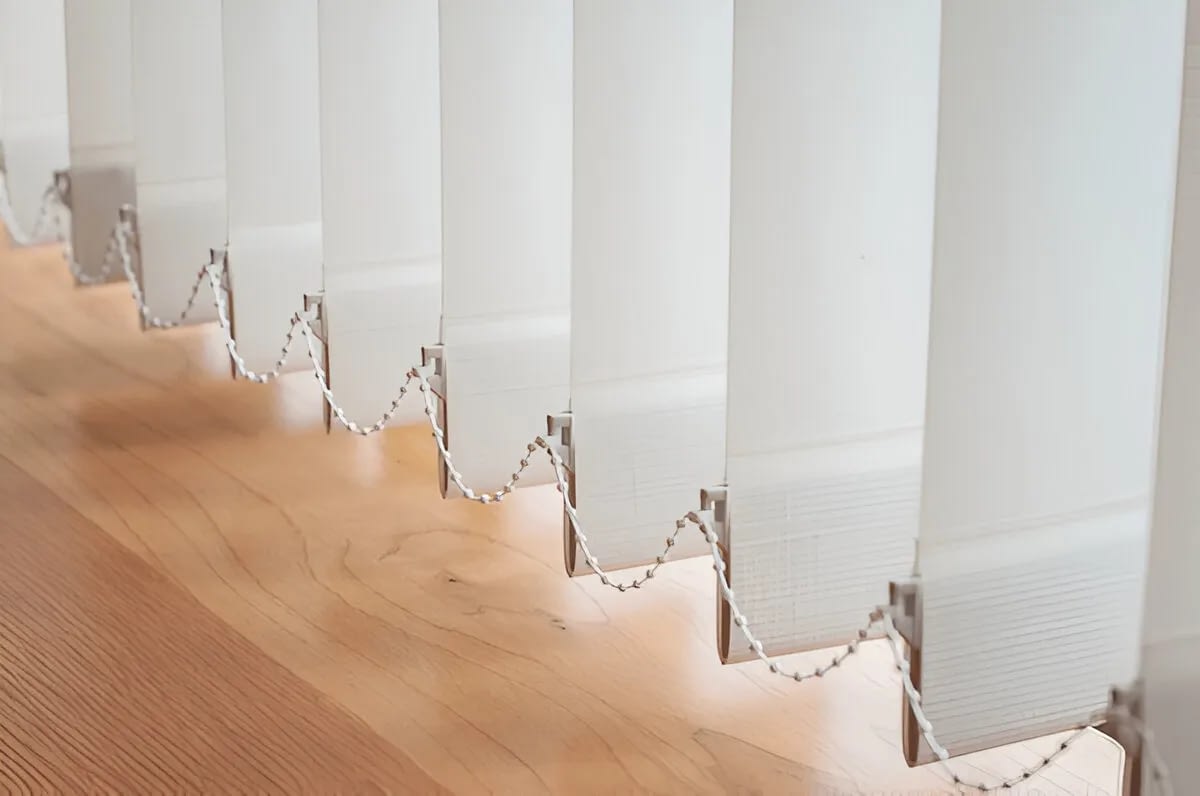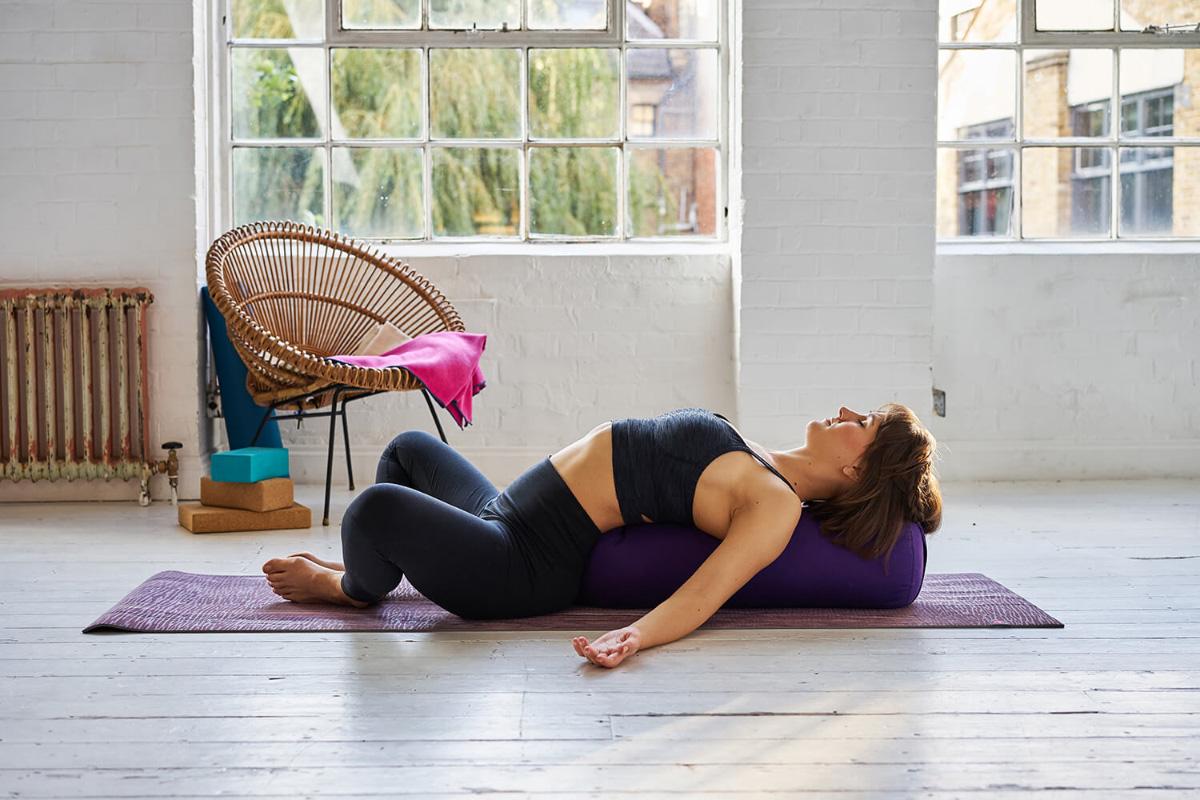Have you ever stood in front of your windows and thought about which kind of blinds would be best? Are you having trouble deciding between the elegant lines of vertical blinds and the timeless look of horizontal blinds? What if picking the wrong style may change how your room looks and how well it works?
It might seem like a straightforward choice between vertical and horizontal blinds, but there are a lot of other things to think about. Each type has its own pros and cons when it comes to things like light control, privacy, upkeep, and expense. The shape of your windows, the purpose of each room, and even your way of life are all very important factors in deciding which choice is ideal for you.
We’ll go over all you need to know about vertical and horizontal blinds in this article. We’ll explain how each type works, show you how they compare, and help you pick the best one for every space in your house. No matter what kind of windows you have, even those long, thin horizontal ones that are hard to deal with, you’ll find useful tips to change your area with confidence.
Contents
Understanding the Basics: What Are Vertical and Horizontal Blinds

Before we start comparing things, let’s be sure we know what we’re talking about. Controlling light and privacy is the main job of both vertical and horizontal blinds, although they do it in quite different ways.
How Do Vertical Blinds Work?
Vertical blinds include separate slats, which are often called louvres, that hang from a track system at the top of your window. These slats go from the ceiling to the floor. You may pull them to one side like curtains or split them in the middle to open them from the center. You may change the amount of light that comes in by turning the slats without opening the blinds all the way. This gives you complete control over privacy and light.
The best thing about vertical blinds is how flexible they are. They work great with sliding glass doors and windows that go from floor to ceiling since they travel in the same direction as these openings. The slats usually come in several widths, from thin 63mm to broader 127mm, so you may make them look the way you want them to in your space.
Read also What Are The Major Advantages Of Installing Outdoor Blinds?
How Do Horizontal Blinds Work?
On the other hand, horizontal blinds have slats that go across the breadth of your window. When you elevate these slats, they stack on top of each other. When you lower them, you can tilt them at different angles. You can use a chord system or a wand to manage them. More and more new options come with cordless mechanisms for better safety and looks.
The fact that horizontal blinds are always in style and let you control the light perfectly is what makes them so popular. You can change the angle of the slats to send light exactly where you want it, like bouncing it off the ceiling for ambient lighting or away from your computer screen. They work great with most types of windows and available in a wide range of materials, from cheap aluminum to high-end wood.
Some Important Differences at a Glance
The direction of the slats is the most noticeable difference, yet this small change leads to a number of useful differences. Vertical blinds are great for covering vast areas and go well with modern design styles. Horizontal blinds give a more classic style and let you control the direction of light better. Vertical blinds may not accumulate as much dust on their surfaces, but horizontal blinds usually have more material selections and can make smaller spaces feel cozier.
Which Is Better: Vertical or Horizontal Blinds? A Detailed Comparison
Now that we understand the basics, let’s examine how these two styles stack up against each other in the areas that matter most to homeowners.
Light Control and Privacy Features
Both types provide you great control over natural light, but they do it in different ways. Horizontal blinds give you incredibly precise adjustment options. You may tilt the slats to prevent direct sunlight while still letting in diffused light. This is great for cutting down on glare without making your space too dark.
Vertical blinds let you be flexible in a different way. You can pull them partway across your window to block off light in certain places while letting light in in others. This is especially useful in spaces where you want to keep your view on one side while blocking the afternoon sun on the other. The rotating feature lets you change the level of seclusion throughout the day as the sun moves.
When fully closed, both alternatives can provide full privacy. But horizontal blinds might give you a little more privacy at night because there are fewer chances of holes forming between the slats. Sometimes, when the wind blows, vertical blinds can come apart a little, leaving little gaps in the view.
Ease of Operation and Maintenance
This is when things become interesting. It’s usually easier to clean vertical blinds because dust doesn’t stick to them as easily. Most of the time, all you need to do is wipe it down quickly or vacuum it gently. Also, if one slat breaks, you can usually just replace that one without having to buy a whole new set.
Dust normally collects on each slat of horizontal blinds, so you need to pay a little extra care when cleaning them. But new materials and finishes have made this job easier than it used to be. A lot of horizontal blinds now have coatings that keep dust away, which makes cleaning them much easier.
It is usually easier to use vertical blinds, especially on bigger windows. It takes less physical effort to draw the side than to raise large horizontal blinds. That being said, cordless horizontal blinds have changed the way we use them by making it easy to raise and lower them with a light push or pull.
Durability and Longevity
With the right care, both types of blinds can endure for years, but how long they last depends a lot on the material used. Vertical blinds constructed of PVC or fabric may handle everyday use effectively, however fabric choices may fade over time when exposed to direct sunlight. The track system is usually strong, but it may need to be adjusted from time to time.
Aluminum or faux wood horizontal blinds are quite strong and last a long time. They don’t warp, fade, or get damaged by water. Real wood horizontal blinds are attractive, but they need to be handled with extra care in humid places. Over time, the parts that lift horizontal blinds can wear out, although good items usually come with great warranties.

Room-by-Room Guide: Choosing the Perfect Blind Style
Every room in your home has unique requirements, and choosing the right blind style can make a massive difference to both functionality and ambiance.
Living Rooms and Open-Plan Spaces
Vertical blinds are great for living rooms since they have clean lines and a modern look. This is especially true if you have big windows or sliding doors that lead to the outside. They can make your home feel bigger and more open by giving the impression of height. You may even pull them all the way to one side to get the best view and natural light when you want it.
But don’t forget about horizontal blinds for living rooms. Horizontal blinds made of real wood or fake wood may make a room feel warm and cozy, which is great for relaxing. They look great in homes with a traditional or rustic appearance, when vertical blinds could look too modern.
If you have an open floor plan, think about making all the windows the same. If you’re blending different types of blinds, make sure the colors and materials work well together to keep the flow of the room.
Bedrooms and Private Areas
In bedrooms, privacy and control over light are the most important things. When fully closed, horizontal blinds are frequently the best choice because they block out light quite well. You can also slant the slats up, which lets in some natural light during the day while still keeping your privacy.
Vertical blinds can also look great in bedrooms, especially if you have sliding wardrobe doors or a balcony. If you want to limit the light the most, think about getting blackout cloth vertical blinds. They also make less noise than some horizontal choices, so they are less likely to rattle in the wind at night.
Safety is the most important thing for kids’ bedrooms. Both types come with cordless choices, but vertical blinds with wand controls are safer for kids and easier for older kids to use on their own.
Kitchens and Bathrooms
In kitchens and bathrooms, being resistant to moisture is quite important. In this case, the choice of material is more important than the direction of the blinds. PVC vertical blinds are almost waterproof and easy to clean, which makes them perfect for these areas. Even in the most humid bathroom, they won’t warp or get moldy.
Another great option for moist environments are horizontal blinds made of aluminum. They’re entirely waterproof, and it’s easy to clean up cooking spills or soap residue. Faux wood horizontal blinds seem like real wood but don’t let in moisture, making them great for making your kitchen feel warm and inviting.
If your ventilation isn’t great, don’t use fabric vertical blinds or real wood horizontal blinds in these locations since moisture can harm them for a long time.
Home Offices and Study Areas
Horizontal blinds are usually better at controlling glare on displays while yet letting in enough light. You can tilt the slats so that light bounces off the ceiling. This will make the light bright and even without shining directly on your screens.
Vertical blinds are also great for home offices, especially if you need to change the amount of coverage during the day. If your desk is next to a window, being able to partially draw vertical blinds can assist you block the sun from certain angles while still being able to see well.
Read Ergonomic Excellence: 5 Simple Tips for Creating a Healthy Office Workspace
Consider light-filtering fabrics for vertical blinds or micro-perforated slats for horizontal blinds if you want to maintain outside views whilst reducing glare.
Blinds for Long Narrow Horizontal Windows: Special Considerations

Not all windows fit the usual mold, and long, thin horizontal windows are especially tricky and need to be thought about carefully.
Why the shape of a window is important
Long, thin, horizontal windows, which are common in modern residences or as clerestory windows, can be hard to dress up well. Because of the proportions, traditional solutions might not look right or work well. The most important thing is to pick blinds that fit these unusual sizes instead than battling against them.
These windows frequently have specific uses, including keeping bathrooms private while letting in light or adding architectural interest to living spaces. Your choice of blinds needs to take these functions into account while also making the window look better.
Best Choices for Oddly Sized Windows
Horizontal blinds usually work well for long, narrow horizontal windows. They stress how straight the window is and how easy it is to use, even though the dimensions are strange. Pick slats that aren’t too wide. On small windows, 25mm or 35mm slats normally look better than 50mm slats.
Vertical blinds can work, but you have to think about them carefully. The slats would run across the window’s long axis, which could make for a strange visual effect. If you decide to go with vertical blinds, make sure the tracking system can take the extra width without sagging and choose narrow slats.
Unique Spaces Need Custom Solutions
There are instances when ordinary options just won’t work. Many companies make specialized solutions just for windows with odd shapes. These could be vertical blind systems with extra support brackets or horizontal blinds that are exceptionally strong for very large spans.
If your windows are exceptionally lengthy, think about dividing them into portions with more than one blind. This not only makes sure that everything works smoothly, but it also gives you more options for controlling the light. You might have portions that are at varying heights or angles, which would make intriguing light patterns while still being useful.
Transform Your Space with the Right Choice
Choosing between vertical and horizontal blinds doesn’t have to be tricky. You may pick the style that works best for you and makes your area appear nicer by knowing how each one operates and thinking about your individual demands. The greatest blinds are the ones that look beautiful in your home and work well with your lifestyle.
No matter if you choose vertical blinds for a modern design or horizontal blinds for a classic look, quality is crucial. Get things from sellers you trust, make sure they are installed correctly, and don’t be afraid to ask for samples before you buy. You can’t take a chance on your windows. They are highly crucial.
You should trust your gut, take your time, and think about everything we’ve talked about. You will have to deal with these blinds every day, after all. Choose things that make you pleased when you walk into a room, operate well for you, and will last a long time. When you finally acquire the correct blinds, you’ll wonder why you waited so long to do it.
#HomeDecor #WindowBlinds #InteriorStyle #BlindsTips #RoomMakeover








